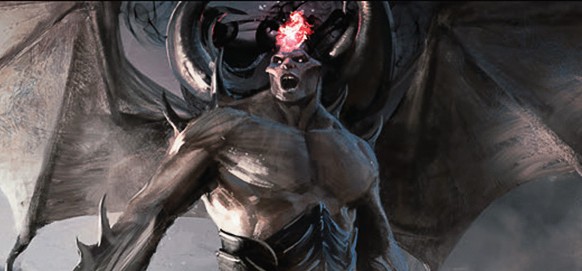With high profile performances from Grishoalbrand and Bloom Titan in Modern this year, we saw the costs of key cards skyrocket: Azusa, Goryo's Vengeance, Nourishing Shoal to name a few. People bought out these cards anticipating the next best combo deck. However, if we look at the metagame now, they don't look like the powerhouses they once seemed. According to mtggoldfish.com (at the time of this article), Bloom Titan accounts for only 2.3% of the meta, while Grishoalbrand accounts for 1.7%.
I take a look at the decks and try to think about why that is. I don’t need to speak to combo strength of either deck. This is obvious. Both can pump out early, unexpected wins. However, let’s look at why there may have been that initial presence in the meta and why it may have petered off.
The New Deck Effect
Running a deck people aren't familiar with can go a long way. While a small part of Magic is dealing with what is happening in the game, a significant portion of it is anticipating what can happen. This becomes even more difficult when it comes time to sideboard because understanding what your opponent may bring in can help you overcome it. Most people have a good idea how the top decks will sideboard, but some of the decks in Tier 2 leave people guessing.
It wouldn’t surprise me if Justin Cohen, Stephen Speck or Zach Jesse faced opponents who simply scratched their heads throughout most of their games, not completely understanding the specifics of what they were playing against. This certainly plays a factor in a match.
Unfortunately, the new deck effect can only last so long as people have a chance to play against the deck more and more.
What is holding them back from being bigger contenders?
Less-than-flexible mainboards:
Grishoalbrand (GSB) and Bloom Titan (BT) have meticulously crafted mainboards. While you might see slight variances when you compare decklists, the mainboards for GSB and BT tend to be quite similar. Why? Every card has a very specific purpose to further its plan to combo (few or no reactive cards) and win the game. This makes it difficult to sideboard because you're taking away essential cards to fit in your sideboard. In fact, for BT, it's not uncommon to drop your Hive Mind combo games 2 and 3.
While Burn is often turning its mainboard burn spells into better burn spells for their match-up (ex.: Destructive Revelry) or Twin is turning its answer suite into an even stronger suite, GSB and BT are left to reduce the effectiveness of their decks to stay afloat and push their combo through games 2 and 3.
Less consistency:
With a deck whose sole purpose is to find and execute a combo, you’re also competing against your deck. Boggles and infect, good examples of decks restricted by inconsistency, are already plagued by having to draw each of the thirds in their decks: lands, creatures and pumps. With GSB and BT, you have to play very specific cards to combo forcing you to dig for playsets of cards instead of much larger groups of cards. A less-than-robust starting hand is not worth risking if you’re presuming you will draw into a key piece. This forces GSB and BT players into more mulligans. Magic players are already plagued by 1 and 6 landers, GSB and BT are no exception. However, having your deck relying on small pools of cards leaves even more to chance before the game even starts.
Narrow wincons:
This is not specific to GSB and BT, but these both have two very distinct win cons: Primeval Titan beatdown or Hivemind upkeep losses from Pacts; and Reanimator beatdown or throwing lands to Borborygmos Enraged. Throw a wrench in those plans (which isn’t difficult with Blood Moon and to a lesser extent, Rest in Peace) and the decks struggle (or scoop). Compare that to some of the more versatile decks of the format with several wincons:
Twin: Control, combo, beatdown or burn
Jund: Control, lockdown, beatdown or, to a lesser extent, burn
GSB and BT are simply fragile in comparison.
Ban potential:
As occasional offenders to the elusive Turn 4 Modern rule, there are some that suspect it’s on Wizard’s watchlist. Both came up in conversations speculating on the next bans prior to the recent announcement. With the ban on Birthing Pod not quite a distant memory, I suspect there are a few people worried their investment into a new deck will be a waste of money. This can certainly act in throttling appearances of the deck on a wide scale.
Summary:
With Splinter Twin currently cemented as THE combo deck for Modern, it would take a lot for it to be dethroned or even contended with. GSB and BT simply don’t have flexibility, consistency and resilience to maintain a spot as top dogs. If they do resurge at an opportune time in the meta, it won’t take long for sideboards to readjust.
That said, all it takes is the printing of a more efficient card for the deck. Scapeshift, which has similar drawbacks to these decks, surged with the (short-lived) help of Dig Through Time. Maybe Grishoalbrand and Bloom Titan will get lucky soon.


